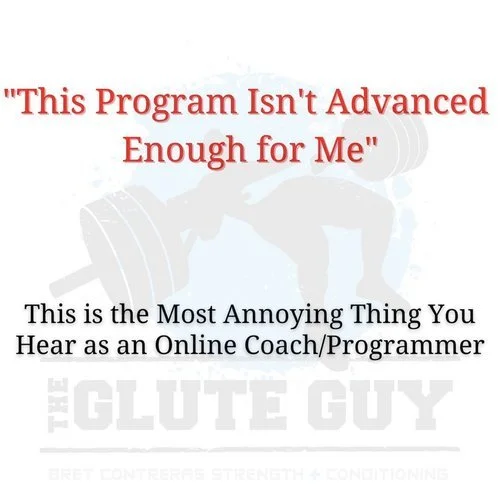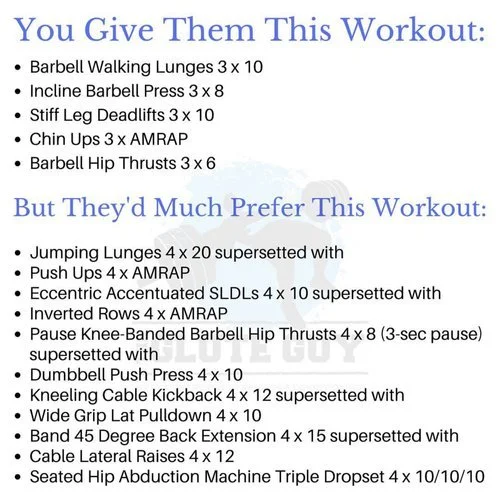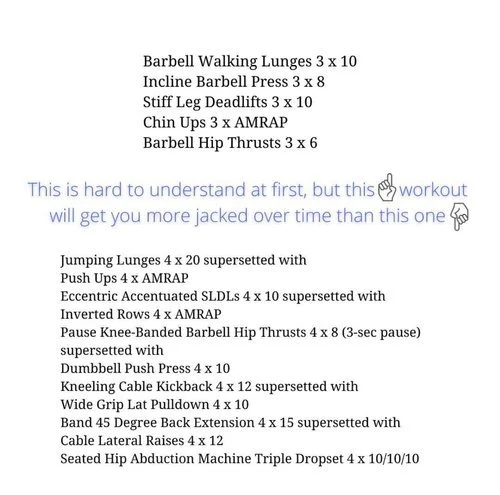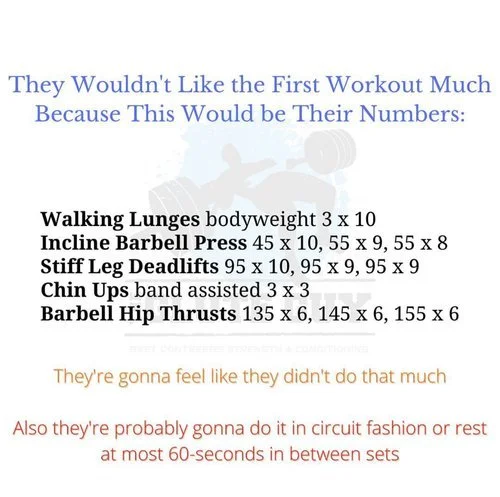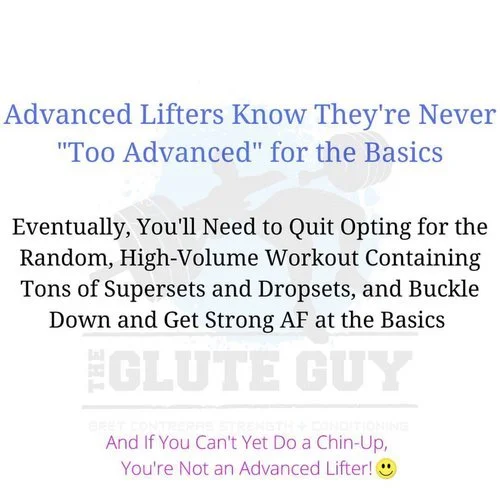12 Beginners Mistakes to Avoid on Your Fitness Journey
Today's article is about… you guessed it—12 beginners mistakes to avoid on your fitness journey'.
It's important to note that if you go through this list and realise you're making many mistakes here, don't be discouraged; we all start somewhere.
Even if you've been doing this for a while, you can take me as an example. I made many mistakes in my earlier days - some of which continued over several years.
I don't want you to look at it as time wasted, but instead, as valuable lessons learnt because:
A) It's true.
B) Mindset shifts like this will do wonders for you long-term.
Going through these lessons myself means I'm in a great position to know where you're coming from and allows me to help Kairos Online members and you, a lot more.
Anyway, let's get stuck into '12 beginners’ mistakes to avoid on your fitness journey', starting with nutrition-based errors, then training mistakes, and finishing with everything else.
1. Cutting Out Entire Food Groups
A popular one for beginners like yourself when looking to get 'healthier' and potentially lose some weight. It's also an approach I prefer to avoid.
Why? Because intolerances and allergies aside, there's no need for it.
For example, what benefit does banning sugar or carbohydrates bring? Nothing, aside from a growing negative relationship with food.
Listen to my two cents on the Keto diet podcast episode.
Let me explain this to you in more depth in the following section.
2. The 'Bad' Food 'Good' Food Mistake
I’ll play devil's advocate for a moment and propose some questions…
What makes bad food bad? Is it sugar? Carbs? Gluten? Dairy? Salt?
What makes good food good? Is it because it's 'healthy'? What determines if a food is 'healthy' or not?
Who determines which foods fall into the 'healthy' and 'unhealthy' categories - and how so? Is it you? Relatives? Friends? Your favourite trainer? A random video on YouTube?
For example, is fruit bad or good for you? It contains loads of vitamins - but then it also contains sugar.
Let's get to the bottom of this mind-boggling situation.
First and foremost, the science. Because that's important, correct?
It's an interesting one - because there are 0 guidelines within the literature for what makes food 'good' or 'bad'.
So what does this mean? It means that your arbitrary standards have been making this decision.
So, what if you saw food as not necessarily being 'bad' or 'good' and instead saw it as 'just food'?
With some simply having a higher nutritional value than others.
What do I mean? First, when not abused, no food in isolation can negatively impact your health and fitness. Not bread, pasta, carbs, pizza, doughnuts, fruit or sugar.
Why? Two examples
Eating food high in sodium occasionally is okay because your body needs it. The issue begins when you regularly consume too much.
Eating foods high in calories once in a while is okay. Because if a calorie deficit (when you consume fewer calories than you burn) is needed for weight loss, then it's too many calories that make you gain weight, a.k.a a calorie surplus.
You would still lose weight if you had a Krispy Kreme doughnut daily while still being in a calorie deficit over weeks.
"But that's not healthy, Leo."
Well, now you're proving my point.
Determining if having a Krispy Kreme every day is a healthy habit, it'd be essential to know more context, e.g. does this person mostly eat foods with a high nutritional value and has the Krispy Kreme doughnut as a one-off treat?
Or is the daily Krispy Kreme on top of the cakes, sweets, ice creams and chocolates?
Do you now see where you're making it challenging for yourself psychologically?
Here's something to consider from today: whenever you want to change for the better, ask yourself if this is realistically sustainable for at least 6-12 months.
Because when you're three weeks into your new approach, and you're feeling hungry at your buddy's birthday party, and the food looks super delicious - you'll end up helping yourself to all the food you've 'banned'.
The issue? You'll feel like you've 'ruined all your progress' - causing you to go on a guilt trip, beat yourself up, and then binge on enough 'banned' foods to feed a giant.
Bringing you back to square 1.
Try implementing the 80/20 rule, with 80% of your calories from more nutritious foods and 20% from more 'fun' foods.
3. Going Way Overboard With Your Supplements
If anyone will be guilty of this, it's me - especially in my beginner days. My room would look like a supplement store at times.
My excuse was that I used to work at Holland & Barrett and GNC between 18 and 20 years old and had access to excellent staff discounts.
What do I do differently nowadays? I stick to minimal supplements and suggest Kairos Online members do the same. An omega 3, multivitamin, whey protein and creatine monohydrate are great options.
Vitamin D is another recommendation between October and March (when Europe tends to see less sun).
Protein bars? If protein intake is slacking on a particular day.
Although the BCAAs, detox teas, L-Cartinine's and the testosterone boosters you're potentially taking are just a few examples of popular supplements that:
Don't work.
Are a colossal waste of money.
Pro tip 1:
You're probably surprised I said BCAAs were a waste of money, but they are.How so? Because if you're already consuming an adequate amount of protein - it's just expensive urine.
"But what if I'm not consuming enough protein, Leo?"
Then you're much better off opting for a whey protein instead.
Pro tip 2:
If you're a vegetarian or vegan, you'll need more supplements than your typical meat eater - with creatine, omega 3 and vitamin B12 being non-negotiables.These are three things that the vegetarian, especially the vegan diet, lack.
4. Opting for More Exercises Over a Lack of Intensity
This is a common theme amongst beginners and a critical habit to shake off. An example is whenever I present a new member with their first programme, and then they go and do it - a few come back claiming "it's not challenging enough".
This could well be something you're doing too.
Why does this happen?
You vastly underestimate your strength.
You haven't built adequate coordination in your compound movements, e.g., improving your squat and deadlift form to start progressively overloading more safely.
Meaning you do a lot of 'junk volume' to compensate for this.
What's junk volume? It's when you do a lot of sets that consist of mindlessly picking up a weight, doing ten reps because your programme says to do ten reps, and then putting the weight back down.
No thought towards progressively overloading.
No thought towards trying to hit muscular failure.
No thought towards lifting a challenging weight that'll push you.
No thought towards how easy or how hard that set was.
This results in the exercises feeling easy, meaning you add more sets and/or exercises to 'make up' for the lack of challenging weight—resulting in you going nowhere long term.
You doing this is exercising with 0 intent towards making long-term progress, and not that there's anything wrong with that. Still, it's safe to say that you want to progress in your workouts, right?
Bret Contreras phrased it best, which you can see in the following images.
5. Aiming for Calories Burned in Workouts
There are many reasons why aiming to burn a specific amount of calories in your workout is a poor idea, and I'll tell you a few below:
Aiming to burn as many calories as possible isn't hard; if you want to do this, jump up and down for 10 minutes.
It's easy to build a negative relationship with food and exercise.
"So what's a good way to know if I had an effective workout, Leo?"
Easy. You'll know you had an effective workout if:
You can lift more weight than before
You can do more reps than before
You were faster than before
You had better control over a specific weight than before
To name a few.
6. High Reps and Lightweight for Muscle Tone
You've heard it before. 1-5 reps are for strength, 6-12 for hypertrophy, and 12-30 for endurance. Here's the issue:
When you hear endurance, you may mistake this for 'looking more toned' - which isn't necessarily true.
To achieve the toned look you desire, you need a low level of body fat and build a sufficient amount of muscle by lifting relatively heavy and close to failure. Something that can be achieved within all three rep ranges.
I promise you that the fitness influencers you see using the light pink dumbbells in their workout videos lift a lot heavier off-camera.
The “1-5 reps are for strength, 6-12 for hypertrophy and then 12-30 for endurance” isn't entirely set in concrete either.
By this, you likely get too caught up with the rigidness of these rep ranges - and think that you absolutely cannot do others you deem outside of your goal, which isn't true.
Regardless of whether or not your goal is getting toned, a.k.a growing more muscle, do you think that progressively overloading the weight in the 1-5 rep range over some time isn't going to result in more muscle gain? Of course, it will.
Maybe not in the most 'efficient' manner, but:
Not being the most 'efficient' option doesn't mean it won't work.
Doing all three rep ranges somewhere in your plan is your best bet to make significant progress anyway.
If you're a newbie to working out and progressively overloading, you'll build muscle regardless of the rep range use if you're close to failure in your sets.
Rather than thinking of rep ranges as entirely black and white, think of the ranges as ideal for whichever specific goal. But understand that they'll very well seep into the other two areas.
If you get stronger, you'll also grow more muscle.
If your endurance improves, so will your strength etc.
7. Picking Exercises Based on Where You Want to Lose Fat
I will keep this section brief, as I cover a lot on my Instagram page at @leoalvespt.
Unfortunately, you cannot pick and choose where you lose body fat - something I always see among beginners such as yourself.
Ab exercises don't help burn belly fat.
Back exercises don't help burn back fat.
Leg exercises don't help burn leg fat.
So, what helps with burning fat?
You guessed it… a calorie deficit - and a calorie deficit only.
Genetics determine where on your body you lose fat fastest/slowest. I could use myself as an example; my upper body stores most of my fat, especially the shoulders, belly and chest. In contrast, my legs tend to always look pretty lean.
Anyway, don't ever use your workout sessions with the goal of 'fat burn' - use them for what they should be: getting fitter, faster and stronger.
Working out with the primary purpose of burning fat is an easy way to grow a negative relationship with exercise.
Let your nutrition handle the rest.
8. Only Using One Indicator of Progress
This is a huge beginner's mistake, and one you should avoid - because putting all your eggs in one basket, like only using scale weight to monitor how well you're doing, is an easy way to sabotage your journey.
My favourite progression hack is to use as many indicators as possible, such as:
Progress pictures
Measurements
How old clothes fit
Increased confidence
Better habits
Strength gained
If you're motivating others
To name a few, and if you're progressing in at least 50% of them, then you are doing damn well.
You could use all of the ones listed above, or you may only use a few - the most crucial part is you at least use 3 or 4 and go from there.
Because if you think about it logically, not all of them will always 'show' signs of progression - which brings me to my next section.
9. Comparing Back-to-back Progress Readings
One of the most popular mistakes I see amongst beginners, and this section is out of pure love and encouragement - so please, for the sake of a better you, physically and mentally - stop comparing back-to-back progress readings.
Why? A few reasons:
That's different from how monitoring progression accurately is meant to work.
The body doesn't work on a 7-day calendar schedule. It often takes much longer for the body to adjust to your current approach.
You're meant to compare reading 5 to reading 1, not 1 to 2.
Some great examples are noted below;
Don't:
Compare your first set of progress pictures to your second set of progress pictures, e.g. January to February. This will likely lead to demotivation when you have not seen as much change as you wanted.
Maybe occasionally, you'll see decent differences in back-to-back monthly pictures, but often, you won't.
Four weeks of consistency isn't enough to undo 5+ years of negative habits.
Do:
Compare your first set of progress pictures to your fourth set of progress pictures, e.g., January to April. This gives you realistic time to see decent progress based on your consistency.
Don't:
Compare Monday's scale weight to Tuesday's or Monday's to Thursday's.
Your body weight fluctuates a ton every day for various reasons, and getting frustrated because you're not seeing it go down after three days of consistency only shows you need more help with your journey than you may think.
Do:
Compare averages over the longer term.
How so? Collect your average weight from January week 1, and compare it to your average weight in February week 1, then repeat the same for weeks 2 and 3 etc. Doing this gives your body a realistic amount of time to see the progression.
It also lets you realise that one-off weigh-ins don't mean a thing.
Don't:
Compare a set of measurements to those that come directly after.
Do:
Compare a set of measurements to those that come 2 or 3 places after. Because if you're taking bi-weekly measurements, this will give your body a lot more time to see the progression and give yourself enough data to pick up on potential outliers that could impact measurements such as menstruation or water retention.
10. Aiming for Perfection
You're probably thinking, "What's wrong with aiming for perfection?"
Well, the issue is that there's no such thing.
The term "I'm a perfectionist" is usually used by someone preparing an excuse for when the going gets tough, such as when events start to pop up and they're finding it a little harder to stay on track. This mindset is associated with your yo-yo'ing - because you'll either do everything at 100% or nothing.
How about amending what you see as realistically sustainable and understanding that 85-95% consistency is a great range to aim for. 85% consistency within the month is about 25 out of 30 days of being on plan.
You can bet you'll see great results with that, as well as give you the breathing space to:
Enjoy life some more.
Not feel so bad when a curveball comes your way that's caused you to go off-plan more than you'd like.
11. Underestimating the Power of Walking.
I’ll tell you a story because everyone loves stories.
In 2019, I worked at a gym in Fulham (central London); I had health and fitness checkups with different members who were interested.
If their health could improve, this checkup would also consist of feedback (with their permission) on my part.
One day, I had a lady come in (I'm going to call her Karen for the sake of this story and to hide her identity) who had been struggling with her weight for years. She worked at an office and had no idea what to do to lose weight or how she could improve it. I'd also seen her train at the gym several times and could see that she could benefit from some guidance.
It's important to note that in the earlier days of your health and fitness journey, your best bet is to start with habits that aren't as 'hardcore' (more on this later) and instead have daily goals and strategies in place, e.g. having a step and/or calorie goal.
That'll mean you have something you can really be consistent with—building up momentum and confidence over the long term.
Towards the end of our talk, I suggested that Karen hit at least 8k steps a day (her current average was 5k) and aim for a calorie range of 1,700-1,800.
This is where it gets interesting because after the meeting, Karen had written an email to my former manager informing her that my advice wasn't adequate and that she “felt disappointed as it was something she could have easily Googled and that it was going to do nothing to help her over the long term.”
The thing is:
Yes, Karen could have Googled it - you can Google everything.
This is precisely why Karen struggled: she overlooked the power of these 'smaller' strategies, not realising that they add up tremendously over the long term.
Karen was almost certainly looking for the 'next shiny object', e.g. a fat-burning pill or detox tea - something I didn't suggest.
The most interesting point of all?
Even though she was dubious, she ended up following my suggestions. When I saw Karen six months later, she approached me, apologised for the email, thanked me loads, and told me how much fitter she felt nowadays.
One thing I am immensely thankful for on the back of the email/feedback provided by Karen is always to ensure that the person I'm speaking to understands the power of these 'smaller' habits.
12. Trying to Make up For the Lack of Consistency by Being More Hardcore
If you're struggling to get results, then there's only one factor you need to consider: consistency.
Are you at least 85-95% consistent? I'd suggest following a consistency calendar for 30 days to make sure.
If you can be confident your consistency is in check, then it's time to tweak something in your plan. You could consider adjusting steps, calorie goals, protein goals, workouts or cardio amount.
If your consistency could be better - then before anything else, aim to be more consistent with your current plan. Do not try to 'make up' for going off plan; this can easily result in a 'binge and restrict cycle' - putting yourself in a never-ending yo-yo.
Meaning that getting back on track with your current plan like nothing happened is your best option.
I also want you to realise that you can't ever screw up.
I know what you're thinking.
"Is Leo crazy? I can think of hundreds of ways to screw up my diet. Just give me 20 minutes.
Just hear me out.
Let's say you go out with your mates on a Saturday night, eat a bunch of pizza (I love a meat feast topping), drink loads of beers, and maybe even enjoy some dessert (red velvet cake is beautiful).
After the night's finished, you go home, and just as you're about to go to sleep, you realise that you went way over your calorie goal, and just the thought of this is super discouraging.
From here, you have two mindset options.
Option A:
"You messed up big time. You went way over your calories and ruined all your hard work this month. At this point, you might as well eat a whole bag of cookies, too, because you've already messed up, so there's no point."
Option B:
"Who gives a damn? You had fun with your mates. Made great memories. Went over your calories one night, and it was worth it. You were super consistent for a solid while now. Seen great progress overall so far. You'll get straight back on plan tomorrow. Nothing changes from here. No biggie."
Which mindset sounds like they're guaranteed long-term progress? I thought so.
I will leave it there for '12 beginners mistakes to avoid on your fitness journey'; I hope this helped.
Also, check out my free ‘Fat loss guide’ by clicking here.
I hope you like it.
Speak soon,
Leo
P.S. If you enjoyed reading this article, please share it on your social media. Word of mouth helps massively in growing my small business.



